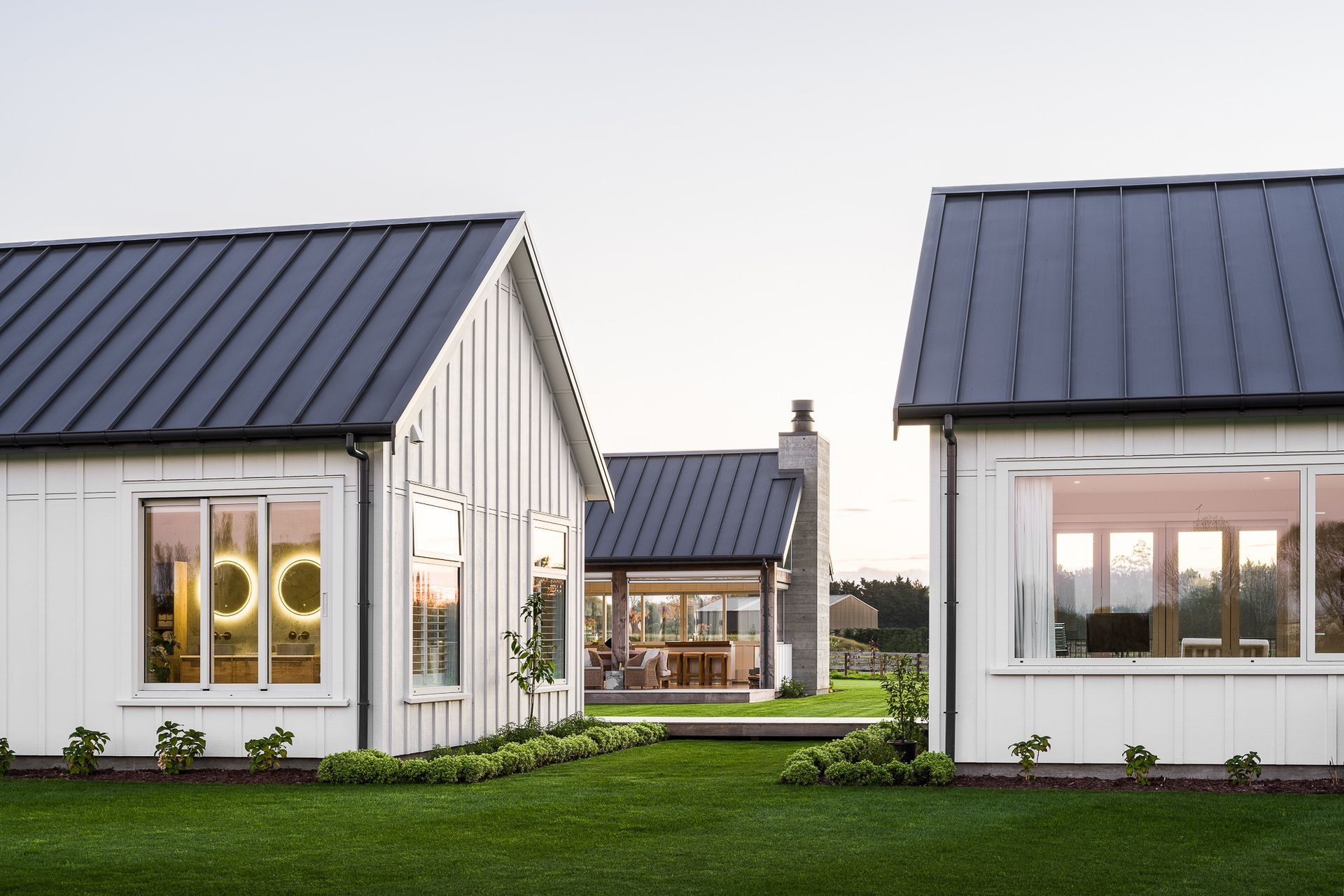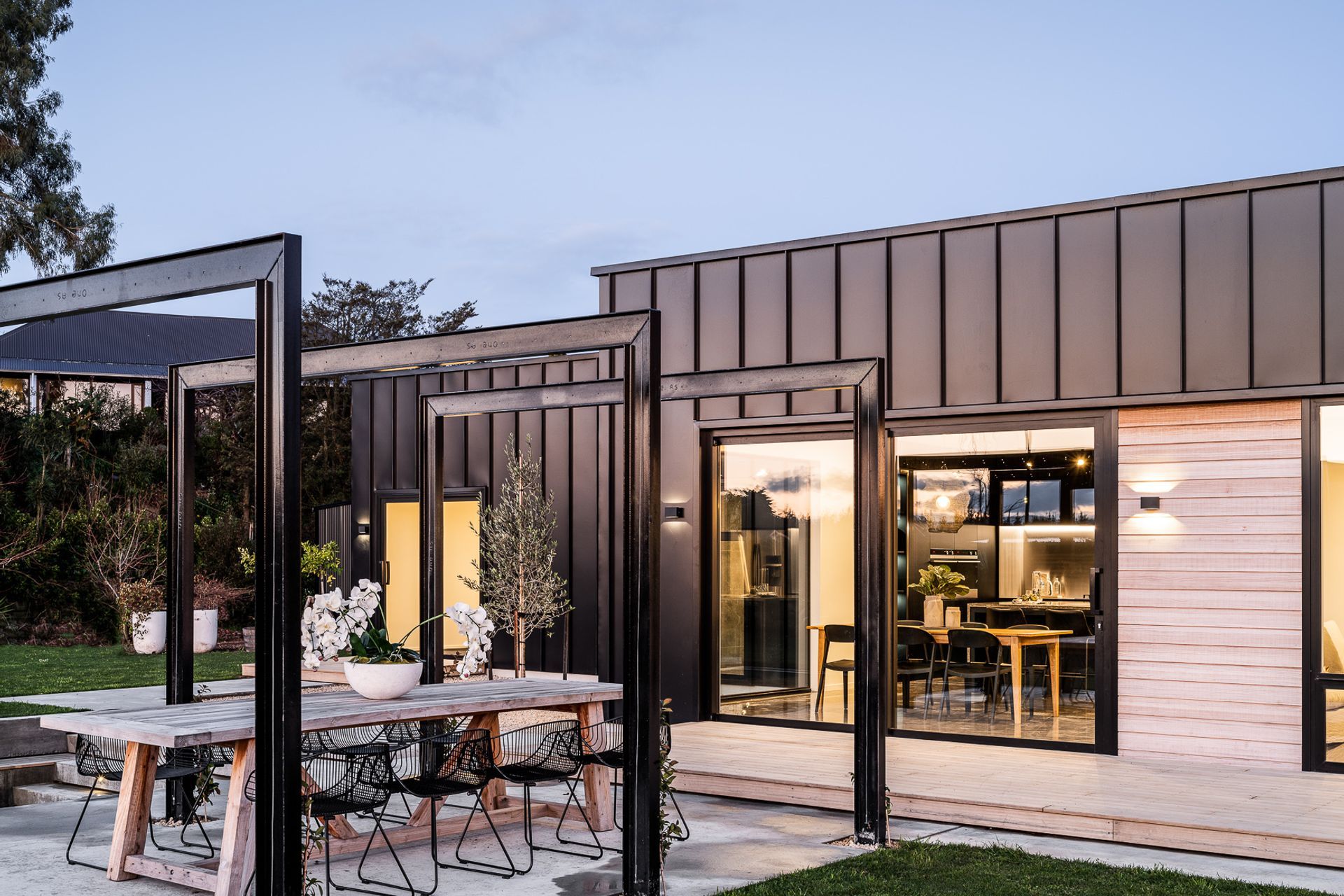5 things you need to know about tray metal cladding and roofing
Written by
25 July 2023
•
4 min read

The look of dark metal tray cladding and roofing burgeoned in popularity after the trend for barn-style houses hit the mainstream. It’s currently being used in both architectural builds and group home builds across the country to elevate exteriors.
Roofing Smith’s Mike Ansett, who has more than 25 years of experience in the industry and has worked with tray or European profile cladding and roofing over this time, says it’s crucial to know what you’re getting and the level of the workmanship of who installs it. Here, he shares five important questions to ask your roofer, before they install your tray cladding or roofing.

Can I avoid oil canning?
The term ‘oil canning’ or ‘canning’ refers to the waves or bows that you often see on tray roofs. For metal sheet products this can appear as bowing or waves in the flat part of the sheet. To prevent excessive canning, it’s important that the builder makes the roof structure as straight as possible. Canning doesn’t affect the structure of the cladding, but some people don’t like the cosmetic effect.
“People always ask can I avoid canning? And the answer with steel is ‘No’. Especially with darker colours, when it gets hot or cold, steel moves. We try to prevent it by using a drainage mat underneath, but that’s pretty much all we can do.”
If you’re really committed to avoiding canning, you can go for an aluminium product.
“We can use a thicker gauge 0.9 aluminium, and that can help it, but in saying that it's an expensive way of doing it and you also need a ply substrate underneath it, which also adds to the cost.”
2. What’s the worst colour for scratches?
Although black is the most popular colour by far for tray cladding and roofing on architectural builds, just like a black car, it shows up more imperfections than other colours.
Mike says if you choose black roofing or cladding be aware that this can be the case. “It doesn’t scratch more than any other product, but it’s the easiest colour to see scratches, so if you’re choosing black cladding it pays to be aware of it.”

3. Can you remove swaggers?
Swaggers are the little channels positioned on the flat parts of the sheet between the ribs, and their purpose is to stabilise the sheet and prevent canning. Mike often gets the question of whether he can remove the swaggers.
“Unfortunately the answer is no, unless you choose to put a ply substrate under the roofing. The swaggers are there to strengthen the tray and help it from any wind uplift. Customers also want to know where the swaggers are and how far apart they are, and this is simply an aesthetic choice,” says Mike. “We use Dimond Roofing’s Heritage Tray, which has swages 50mm in from either side of the rib.”
4. How much experience do you have in installing tray roofing?
When it comes to installing tray roofing and cladding, it’s a different kettle of fish to regular corrugated sheet metal. Particularly when there are complicated joins between roof and walls, flashings need to be installed correctly.
“There's a lot of flashing detail that goes into tray cladding and roofing that we do properly, but some companies don't, which has cheapened the product, and sometimes causes failures. We do tray properly and use the right flashing work for it.”
So how do you know if your roofer is qualified to install tray roofing? Mike says to ask them how much experience they have, and ask for references or examples of recently completed jobs.
5. How long does it take to install?
As a rule, a tray roof will go on far quicker than tray cladding, says Mike. “For an average sized house a roof generally takes up to two weeks and cladding takes two to three weeks.”
Of course, this can change due to weather, and depends on the number of junctions and valleys in the roof, and the number of openings in the walls of the house.
Discover roofing projects by Roofing Smiths

